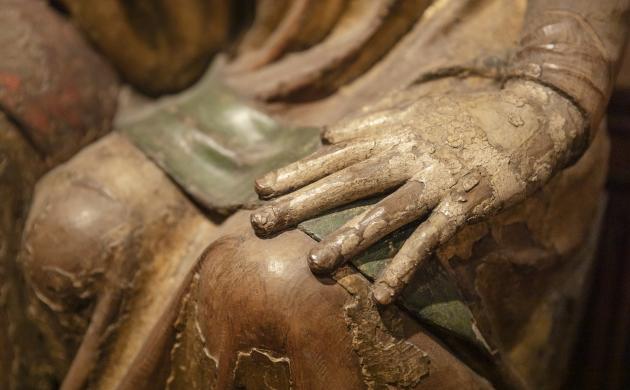A high-quality landscape
A specialist team of conservators took great care while restoring the altarpiece, which was painted between 1500 and 1520, and removed surface dirt, yellowed varnish and previous retouching from the panels. New retouching was performed with great caution and circumspection. The frames have also undergone cleaning and restoration. The result is very much a feast for the eyes! The work once again shows its original clarity. Not only can the colours now be seen in their full glory, but many of the details that had been less distinct as a result of the varnish are now visible again. The landscape in the background also contains many new things to discover. This scenery full of nature and architecture continues across the three panels and now that the visual disruption caused by the varnish has been removed, turns out to be of very high quality. In fact, the landscape painting is similar to that on other notable works by Massys, such as the Joiners' Guild Altarpiece (1511, Antwerp, KMSKA) and the St Anne Altarpiece (1509, Brussels, RMFAB).
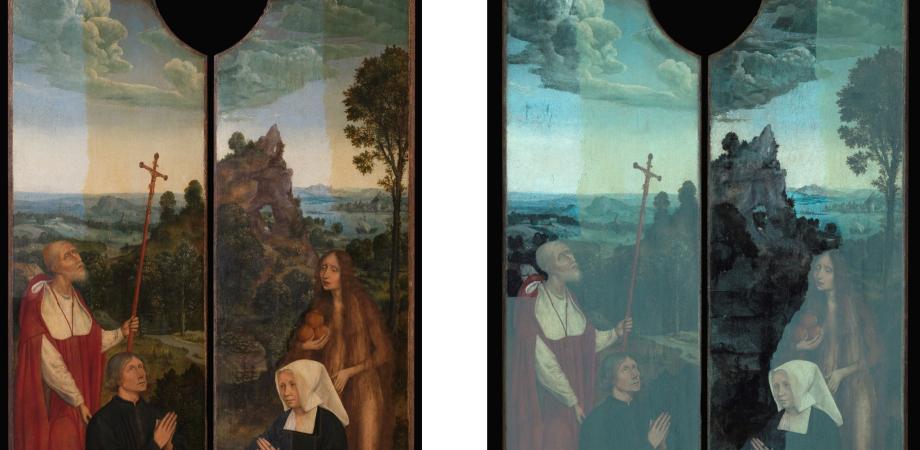
The difference following the removal of surface dirt, yellowed varnish and previous retouching.
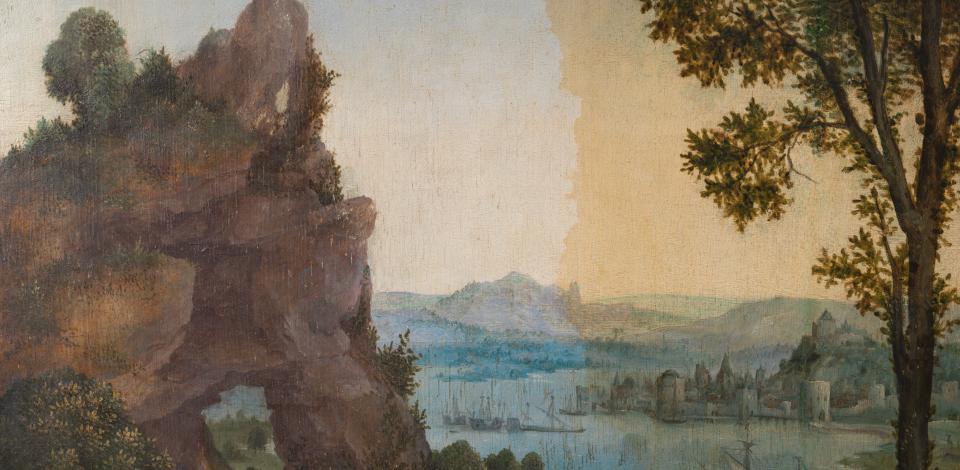
The difference following the removal of surface dirt, yellowed varnish and previous retouching.
The hand of the painter
The restoration of the altarpiece reveals a lot of information about Massys' painting technique. His extremely fine brush strokes are now visible to the naked eye. Here and there, we can even discover a fingerprint within the surface of the paint. In addition, we can see that Massys used a ‘stippling technique’ to intensify the colours and textures of robes. With a dabbing motion, he (or a painter from his studio) applied a coloured glaze to the coloured ground layer. The result is a pattern of tiny dots, a kind of pointillism avant la lettre.
Veronica becomes Maria
Another striking detail is the bright red mouth of Mary of Egypt, the saint on the right-hand panel. Why is her mouth so large and red? The answer lies in the working method used by Massys and his studio. The painter first set down the composition in the form of a drawing, a kind of sketch. Using Infrared Reflectography (IRR), specialists at the KIK-IRPA were able to view this underlying drawing and it was then that they made a surprising discovery! Mary of Egypt had been painted on top of an image of Saint Veronica. This image of Saint Veronica is fully elaborated on the underlying drawing, with her distinctive hood and shroud. Her mouth was slightly open, but for Mary of Egypt, Massys opted for a closed version. Veronica's mouth was then painted over and filled with a thick red brush stroke.
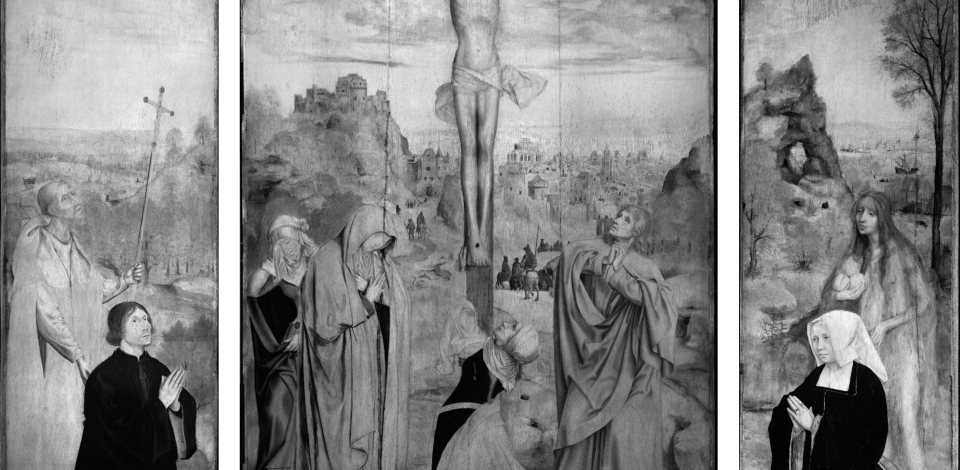
The drawing behind the painting
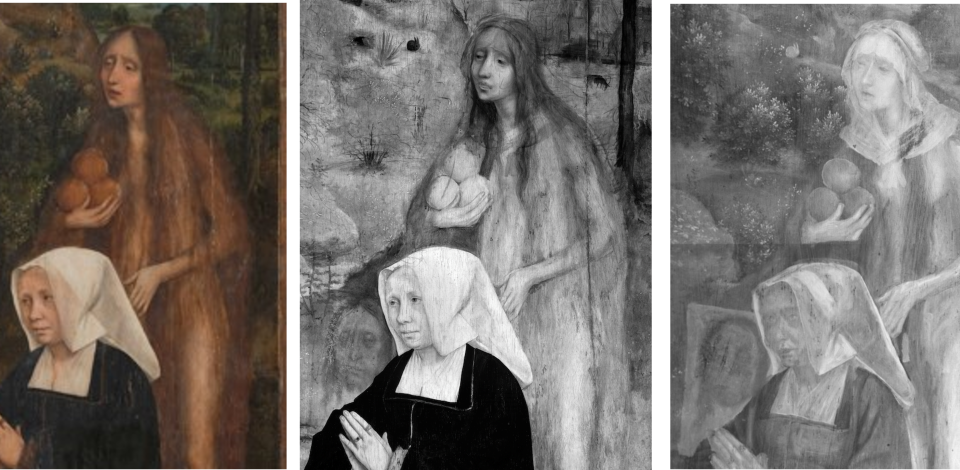
Far right: Ma-XRF images show Saint Veronica on the underlying drawing, with her distinctive hood and shroud. Next to the donor, the head of Christ is visible on the shroud.
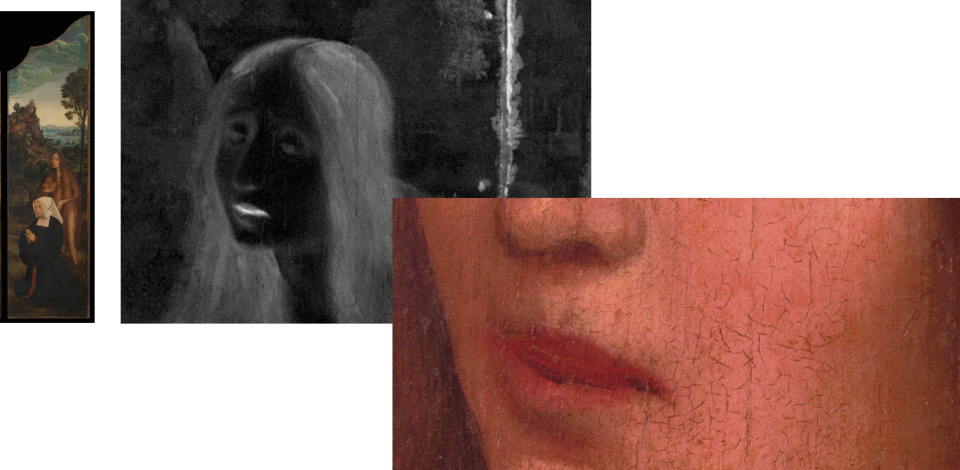
The bright red mouth of Mary of Egypt
A new marriage or changing fashions?
Why did Massys change the patron saint of the donor? Perhaps the patron's first wife died before the triptych was finished and the husband remarried. If this was the case, a new patron saint had to appear on the painting. Or was an earlier commission from the studio withdrawn and they decided to reuse the already painted panels? That would of course have required Massys to alter the patron saint of the commissioning party. The fact that the length of hair of the patron – who is kneeling on the left panel – was also changed supports the second hypothesis. Was a new male patron being depicted here? Or is it simply a case of changing fashions? Finishing an altarpiece often took several years. And prevailing fashions were also changing rapidly in the sixteenth century.
A layer of wax
The conservators not only examined the front of the altarpiece, but also closely scrutinised the rear. The reverse sides of the side panels are covered with a thick layer of wax. In many cases, these panels were painted with simpler (or less important) representations. The altarpiece was solemnly opened only on Sundays and holidays. So most people saw only the closed shutters. Was this also the case for Massys' altarpiece? Unfortunately not. The ‘viewing windows’ that the researchers carefully created in the layer of wax in order to expose any underlying painting did not reveal anything.
The conservators at work
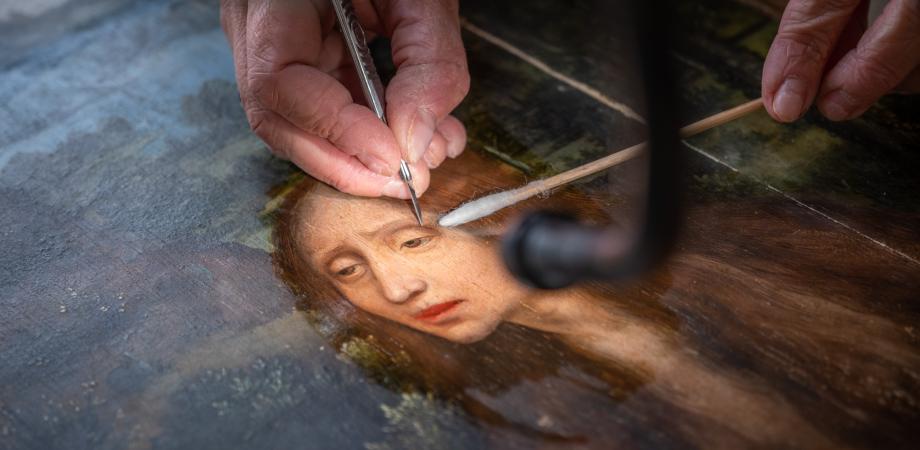
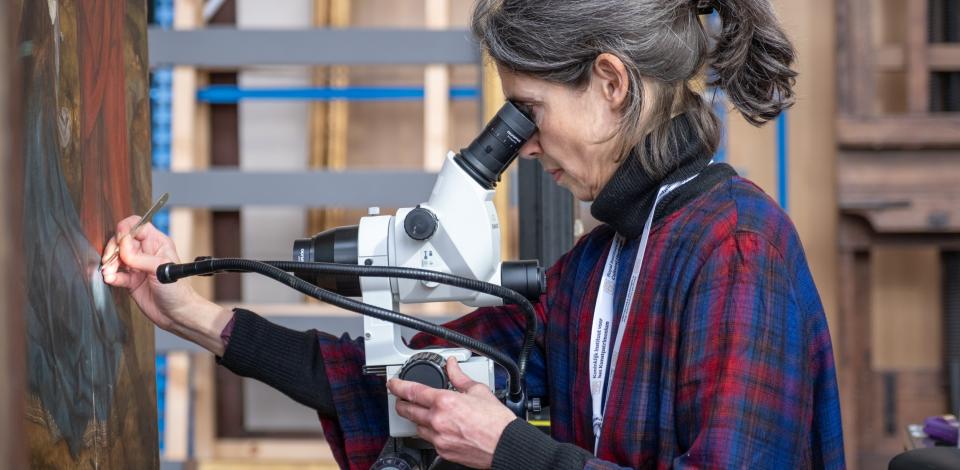
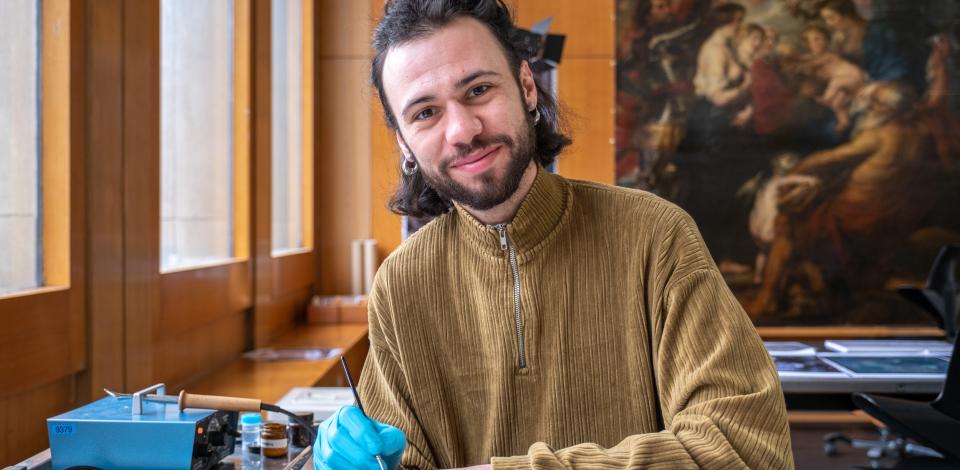
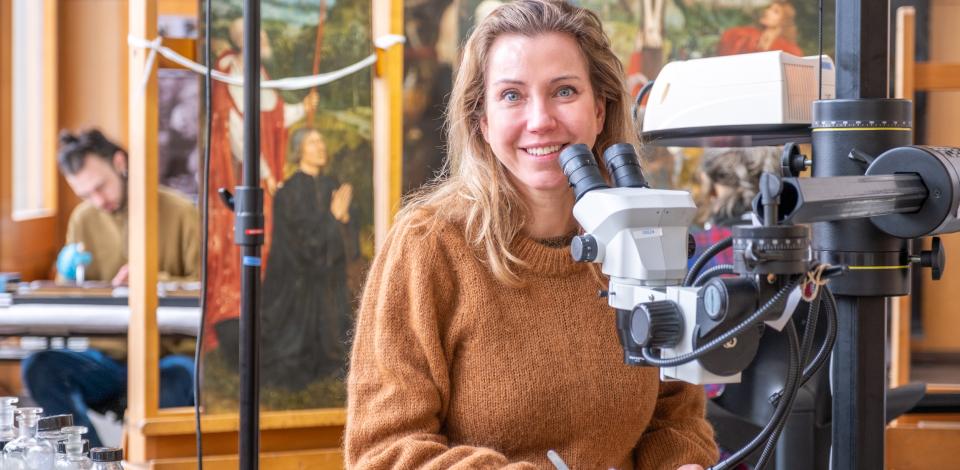
Back home
In the autumn of 2023, 'Christ on the cross with donors' returned to Antwerp. Initially, not to the Mayer van den Bergh Museum, but to the MAS. The work shone there in the temporary exhibition 'Rare and Indispensable. Masterpieces from Flemish collections (October 31, 2023 - February 25, 2024).
Since early March 2024, the work has finally returned home and can be admired in all its glory and colorful splendor in the museum.




